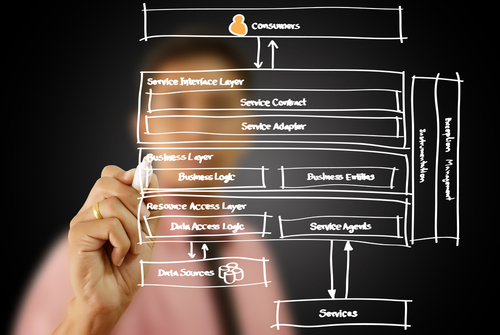As much as we rely on the network to complete daily tasks and ensure the successful operation of our business, it’s critical that it performs according to expectations. This means network management has to focus on optimal performance at all times, not just when something goes wrong.
This type of management requires a focus on risk analysis. According to a recent Cisco (News  - Alert) post, this analysis should look for any risks that threaten your network, network resources and data. Such an analysis doesn’t require you to identify every possible entry point to the network or even every possible means of attack. Instead, it directs the method by which you identify specific regions of the network and assign a threat rating to each portion.
- Alert) post, this analysis should look for any risks that threaten your network, network resources and data. Such an analysis doesn’t require you to identify every possible entry point to the network or even every possible means of attack. Instead, it directs the method by which you identify specific regions of the network and assign a threat rating to each portion.

Image via Shutterstock
This allows you to then assign the appropriate level of security to that portion. It also ensures you can easily maintain a workable balance between security and the access that is required for that part of the network. Using the following risk levels can help with the organization of portions of the network:
Low Risk – this is the area of the network that if data were compromised or systems accessed, it would not upset the business process or cause any legal or financial ramifications. This area is also easily restored and a breach does not offer access to any other part of the network.
Medium Risk – this area of the network presents a little more challenge if compromised. A moderate disruption in the business could occur and minor legal or financial ramifications are possible. A moderate effort is needed to restore this part of the network and access could put other portions at risk.
High Risk – this is the area of the network that puts the business most at risk if compromised. It could cause extreme business disruption, major legal or financial consequences or even threaten the life or safety of an individual. Significant effort is needed to restore the system and access could threaten all other areas of the network.
Once the level of risk has been assigned to different portions of the network, you’re then able to identify the different types of users that may access that section of the network. The most common users include administrators, privileged, users, partners and others. Each user should be categorized according to the portion of the network they can access. Monitoring of their access and use of the network should then ensue.
Overall network management is a real challenge in an age where data is power. Protecting the network and its users is the main goal of an IT administrator to ensure the business can operate according to expectations.
Edited by Blaise McNamee
Network Management Home
 Internet Telephony Magazine
Click here to read latest issue
Internet Telephony Magazine
Click here to read latest issue CUSTOMER
CUSTOMER  Cloud Computing Magazine
Click here to read latest issue
Cloud Computing Magazine
Click here to read latest issue IoT EVOLUTION MAGAZINE
IoT EVOLUTION MAGAZINE




